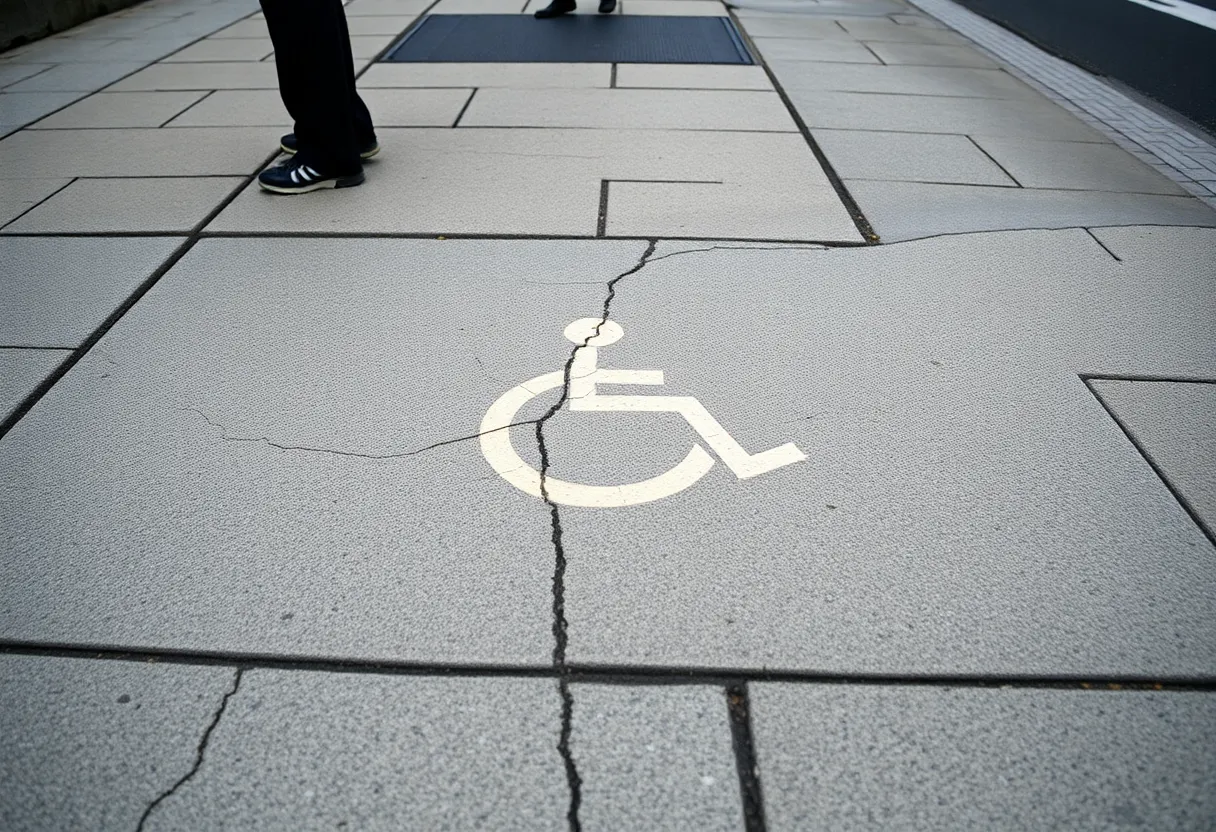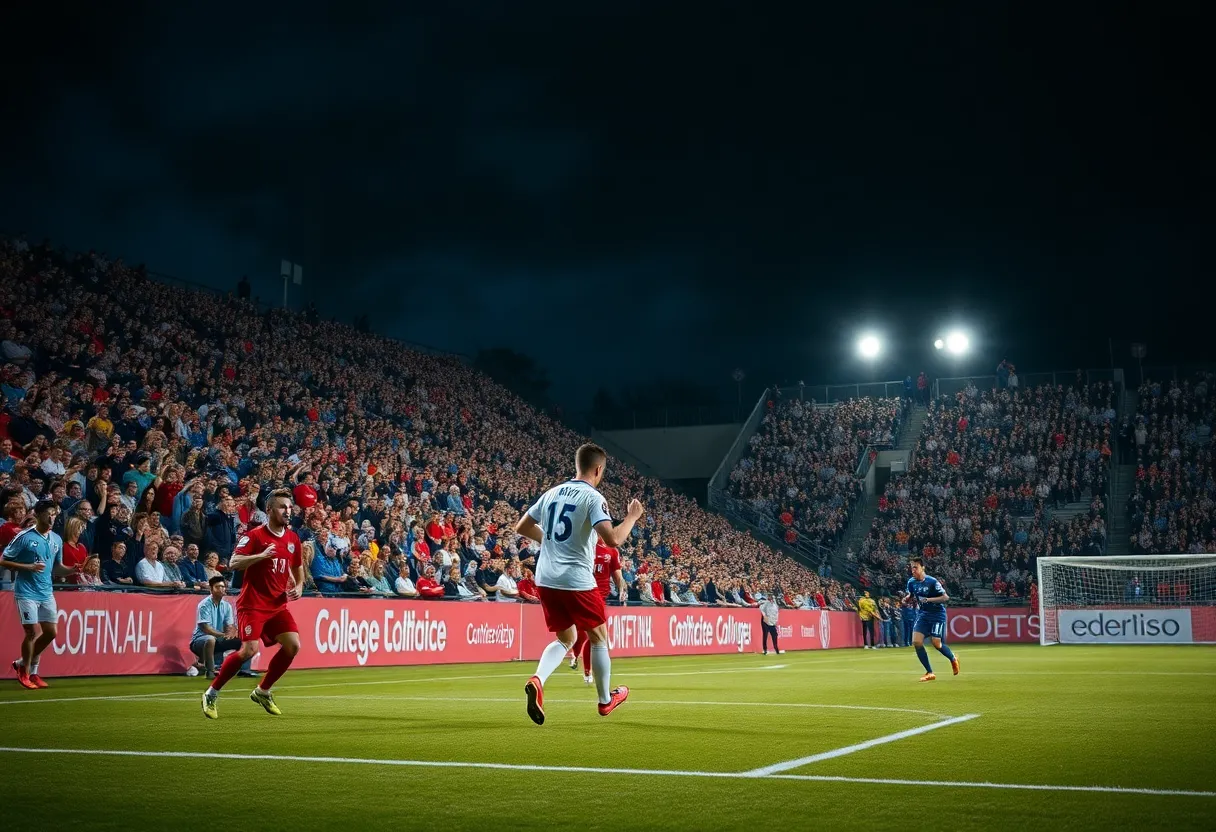Tucson, October 22, 2025
A recent report from the Tucson Department of Transportation reveals that over 60% of the city’s sidewalks do not comply with ADA standards, endangering vulnerable residents such as the elderly and disabled. Local outrage has ensued as residents demand immediate action to improve walkability. The city has allocated $5 million for urgent repairs but many citizens are calling for a more comprehensive renovation strategy to ensure that Tucson is accessible for all. The report highlights years of neglect and the urgent need for upgrades in infrastructure.
Tucson Sidewalks Deemed Mostly Inaccessible by Department of Transportation
Over 60% of Paths Fail ADA Standards, Sparking Local Outrage
Tucson, AZ – In a startling revelation, the Tucson Department of Transportation has declared that over 60% of the city’s sidewalks fail to meet Americans with Disabilities Act (ADA) standards, rendering them largely inaccessible to vulnerable residents. This assessment, detailed in a report released today, highlights significant safety risks for the elderly and those with disabilities who rely on these paths for daily mobility. The findings have ignited widespread frustration among locals, who view the deteriorated infrastructure as a barrier to safe and inclusive urban living in Arizona’s second-largest city.
The report paints a grim picture of Tucson’s walkability, emphasizing how uneven surfaces, missing ramps, and inadequate widths create hazardous conditions. Pedestrians with mobility challenges face daily obstacles, from tripping hazards to complete blockages, which limit access to essential services, schools, and public spaces. City officials have responded by pledging $5 million for immediate repairs, aiming to address the most critical problem areas within the coming fiscal year. However, residents are calling for accelerated efforts, arguing that the allocation, while a step forward, falls short of the comprehensive overhaul needed to make the city truly navigable for all.
Detailed Assessment Reveals Extent of the Problem
The comprehensive survey conducted by the Department of Transportation evaluated thousands of miles of sidewalks across Tucson’s neighborhoods. Key issues identified include cracked and buckling concrete, absent or non-compliant curb cuts, and overgrown vegetation encroaching on pathways. In densely populated areas, where foot traffic is highest, the non-compliance rate exceeds 70%, exacerbating the challenges for wheelchair users, parents with strollers, and seniors navigating with walkers or canes.
Accessibility advocates have long raised alarms about these deficiencies, but the official report marks the first city-wide quantification of the issue. Data shows that neighborhoods in the urban core and older suburbs are hit hardest, with some sections completely unusable during rainy seasons due to pooling water and mud. The lack of maintenance over decades has compounded the problem, turning what should be simple walks into risky endeavors. For the elderly population, which makes up a significant portion of Tucson’s over 500,000 residents, this translates to isolation and reduced quality of life.
City’s Repair Plan and Community Pushback
In response to the report, transportation officials outlined a phased repair strategy. The $5 million investment will prioritize high-traffic zones near hospitals, community centers, and transit stops, with work slated to begin as early as next quarter. The funding will cover resurfacing, ramp installations, and compliance upgrades, but experts estimate the total cost to bring all sidewalks up to ADA standards could surpass $50 million over the next decade.
Local residents express skepticism about the timeline, pointing to past delays in infrastructure projects. Community groups have mobilized, organizing petitions and town halls to demand transparency and faster implementation. They argue that piecemeal fixes won’t suffice; instead, a bolder commitment to equitable design is essential for fostering an inclusive environment. The outrage stems from the perception that walkability is not just a convenience but a fundamental right, especially in a city known for its sunny climate and pedestrian-friendly aspirations.
Background on Tucson’s Infrastructure Challenges
Tucson has grappled with aging infrastructure for years, with sidewalks often deprioritized in favor of road repairs and traffic improvements. As Arizona’s second-largest city, it boasts a diverse population that includes a growing number of retirees drawn to its mild weather and cultural vibrancy. Yet, the city’s expansion has outpaced maintenance budgets, leading to widespread deterioration. Federal ADA requirements, enacted in 1990, mandate accessible public spaces, but enforcement and funding have varied across municipalities.
This report arrives amid broader discussions on urban planning in Tucson, where walkability is increasingly tied to public health and economic vitality. Improved sidewalks could encourage more walking and cycling, reducing reliance on cars and promoting healthier lifestyles. For the disabled community, accessible paths mean greater independence and participation in civic life. As the city moves forward, balancing budgetary constraints with resident demands will be crucial. The $5 million pledge signals intent, but sustained action is needed to transform outrage into tangible progress, ensuring Tucson becomes a model for accessible urban design.
FAQ
What percentage of Tucson’s sidewalks fail to meet ADA standards?
Over 60% of the city’s sidewalks fail to meet ADA standards.
What risks do the inaccessible sidewalks pose?
The inaccessible sidewalks pose risks to the elderly and disabled.
How much funding has the city pledged for repairs?
City officials pledge $5 million for repairs.
What are residents demanding in response to the report?
Residents demand faster action to improve walkability in Arizona’s second-largest city.
When was the report released?
The report was released today.
Key Features Chart: Tucson Sidewalk Accessibility
| Feature | Details |
|---|---|
| Non-Compliance Rate | Over 60% of sidewalks fail ADA standards |
| Affected Groups | Elderly and disabled residents |
| City Response | $5 million pledged for repairs |
| Resident Demands | Faster action for improved walkability |
| City Status | Arizona’s second-largest city |
Deeper Dive: News & Info About This Topic
HERE Resources
Tucson’s Development Boom Driven by Northern Arizona Growth
Tucson Addresses Homelessness-Related Crimes with New Measures
Sunnyside High School Student Struck by Vehicle in Crosswalk
El Rio Neighborhood Association Unveils Revitalization Project




